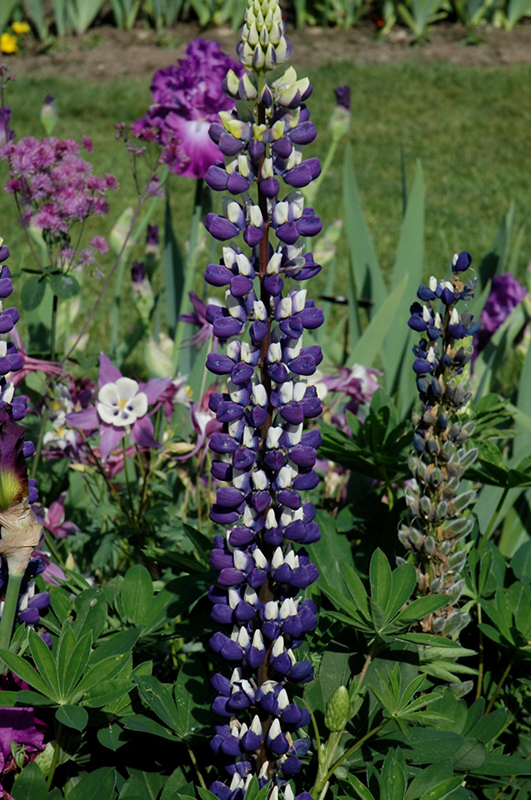Height: 3 feet
Spacing: 12 inches
Sunlight:
![]()
![]()
Hardiness Zone: 4a
Description:
A stunning compact hybrid producing thick spikes of eye catching two-tone marine blue and white flowers; a tremendous visual impact massed in the garden, border plantings or in containers
Ornamental Features
The Governor Lupine features bold spikes of blue pea-like flowers with white overtones rising above the foliage from late spring to early summer. The flowers are excellent for cutting. Its palmate leaves remain emerald green in color throughout the season.
Landscape Attributes
The Governor Lupine is an herbaceous perennial with a rigidly upright and towering form. Its relatively fine texture sets it apart from other garden plants with less refined foliage.
This plant will require occasional maintenance and upkeep, and should be cut back in late fall in preparation for winter. It is a good choice for attracting hummingbirds to your yard, but is not particularly attractive to deer who tend to leave it alone in favor of tastier treats. Gardeners should be aware of the following characteristic(s) that may warrant special consideration;
- Self-Seeding
The Governor Lupine is recommended for the following landscape applications;
- Mass Planting
- General Garden Use
Planting & Growing
The Governor Lupine will grow to be about 30 inches tall at maturity, with a spread of 15 inches. When grown in masses or used as a bedding plant, individual plants should be spaced approximately 12 inches apart. It grows at a fast rate, and under ideal conditions can be expected to live for approximately 3 years. As an herbaceous perennial, this plant will usually die back to the crown each winter, and will regrow from the base each spring. Be careful not to disturb the crown in late winter when it may not be readily seen!
This plant does best in full sun to partial shade. It does best in average to evenly moist conditions, but will not tolerate standing water. It is not particular as to soil pH, but grows best in clay soils. It is somewhat tolerant of urban pollution. This particular variety is an interspecific hybrid, and parts of it are known to be toxic to humans and animals, so care should be exercised in planting it around children and pets.
A NetPS Plant Finder tool


